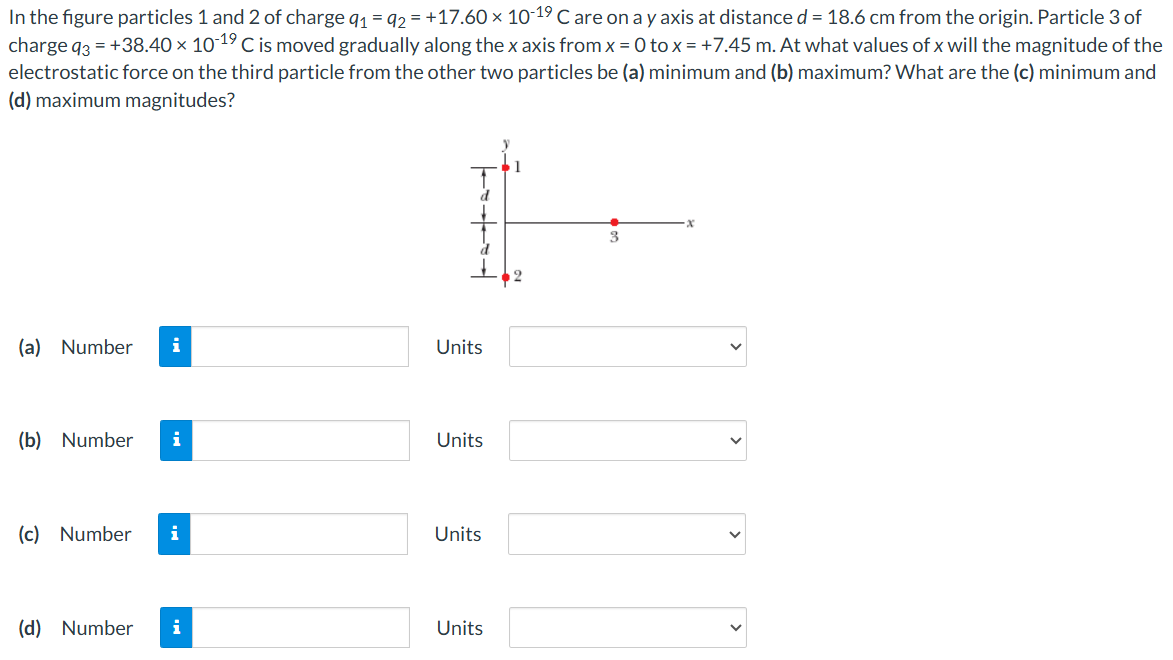In the figure particles 1 and 2 of charge q1 = q2 = +17.60×10−19 C are on a y axis at distance d = 18.6 cm from the origin. Particle 3 of charge q3 = +38.40×10−19 C is moved gradually along the x axis from x = 0 to x = +7.45 m. At what values of x will the magnitude of the electrostatic force on the third particle from the other two particles be (a) minimum and (b) maximum? What are the (c) minimum and (d) maximum magnitudes? (a) Number Units (b) Number Units (c) Number Units (d) Number Units
